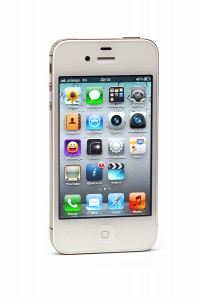With Apple Inc.’s (NASDAQ:AAPL) new focus on sapphire crystal production, likely for the display of the iPhone 6, there is naturally rampant speculation about whether the material will be used to cover future iPad tablets as well. Though technically feasible, the idea seems unlikely to be actually utilized, because high costs would not be offset by correspondingly high benefits. Sapphire is much more suitable for iPhones than for iPads, due to the unique carrying and use characteristics of each device.
A quick glance at the characteristics of sapphire crystal shows why it is more likely to be used for certain devices than others. Sapphire’s standout advantage is that it is essentially scratch-proof. The Mohs scale of hardness reveals that glass has a hardness of 5 to 7, with Gorilla Glass falling close to the value of 7. Steel has a hardness of 8, meaning it can scratch glass. Sapphire crystal’s Mohs hardness is 9, hard enough so that it scratches steel but cannot be scratched by it. Only diamond, with a Mohs hardness of 10, is harder.
 Even dedicated fans of Apple have complained about the speed with which the display of an iPhone typically gets scratched after purchase. The sleek aesthetics of a new smartphone are soon flawed by scratches on the display’s gleaming surface. Scratches also create weak points in the display, which can later shatter along these lines of damage. If the scoring cuts deep enough, it can even interfere slightly with touchscreen function. For these reasons, screen protectors are becoming ever more popular among iPhone owners, including sophisticated tempered glass ones.
Even dedicated fans of Apple have complained about the speed with which the display of an iPhone typically gets scratched after purchase. The sleek aesthetics of a new smartphone are soon flawed by scratches on the display’s gleaming surface. Scratches also create weak points in the display, which can later shatter along these lines of damage. If the scoring cuts deep enough, it can even interfere slightly with touchscreen function. For these reasons, screen protectors are becoming ever more popular among iPhone owners, including sophisticated tempered glass ones.
Sapphire display glass is ideally suited to a smartphone. Smartphones are put into pockets, purses, and other containers, where they are likely to strike up against other objects such as rings of steel keys. Chances are high that sooner or later an iPhone will scrape up against a steel object in the owner’s pocket, thus encountering a sharp angle of metal that has a Mohs hardness of 8. In any current glass display, this will leave a scratch, and maybe several. A sapphire display, on the other hand, would shrug off such a contact and come out of the pocket as smooth, bright, and undamaged as it went in.
Tablets, such as iPads, are not exposed to nearly the number of potentially scratch creating situations as are iPhones. They are not stored in pockets or purses along with key rings, pocket knives, and other hard, sharp-edged objects. In fact, they are likely to be carried inside a vinyl, leather, or plastic cover for protection. Thus, the risk of scratching is very low compared to a smartphone. However, an iPad’s display has six times the surface area of an iPhone’s, meaning that it would be far more expensive to produce for little reason.
The iWatch, despite persistent rumors, also seems like a poorer candidate for a sapphire display than the iPhone. Sapphire glass is thicker and heavier than regular glass such as Gorilla Glass, and would add significantly to the weight of a wristwatch. It is also not flexible, while Apple is thought to be considering the manufacture of a lightweight, flexible iWatch as the flagship product of the line. Though it is by no means certain, there are solid reasons why sapphire crystal displays may be used by Apple Inc. (AAPL) on the iPhone only.



